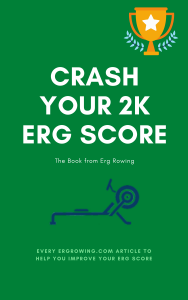Staying Braced For Maximum Rowing Power.
Imagine this. Imagine you are in a life and death situation. Imagine that you are out for a walk one fine sunny day. As your route passes by a cliff top you hear a shout for help. You lean over the guard wall and look down to see someone stuck on a ledge 50 feet below.
You must help this person and you must act quickly. There’s no one else around to help and you’ve got no cell phone coverage. You think about climbing down but that’s not going to achieve anything.
You look around and amazingly find a rope nearby. You decide to tie a big stick to one end and throw the other end down. You tell the person to hold on so you can pull them up.
Now what – what’s next. How do you do it? What is the best way to use your body weight and strength to lever this person up the 50 feet to safety?
Want to know what I’d do?
Well I’d anchor my feet against the wall and use all of my leg back and arm strength to lever the person up. Each couple of feet I would gain, I would wrap the rope around a nearby anchor to take the slack off the handle. I would then wind the slack piece of rope around the stick, release the anchor and pull again.
It’d be hard work but I’d know from erging and rowing that by bracing my feet low against the wall, I am able to hang and lever all of my weight from my feet through my legs, back and arms.
I also know that by keeping my arms straight makes me stronger and I don’t get tired. My arms only bend when the pressure comes off so I can wind the stick.
This is the feeling you need to get when you are bracing your feet against the erg foot plate. You need to hang your weight through your legs, back and straight arms onto the handle.
Remember:The seat is only used for balance.
Here’s a simple exercise to get the feeling of hanging your weight on the handle.
- Arrange for you and a partner and sit on the floor facing each other.
- Connect both of your feet so that your right foot sole is pressing against your partner’s right foot sole. Do the same on the left side.
- Both of you must keep both knees slightly bent. Next, form a hook with your right hand by making an unclenched fist. Get your partner to do the same and connect by hooking each other. Do the same on the left side.
- Now use your feet to anchor, your hands for levering and the ground as your balance point. Experiment with lighter and heavier partners to get that feeling of hanging your body weight.
P.S. You should read this erg rowing technique article I recently put up. It fits well with the stuff said above.
[mc4wp_form]
Want More Erg Rowing Insights?
Subscribe to get notified immediately about new posts.
Introducing the 2K Erg Book

See Book Chapters
9 Chapters full of the best articles from ergrowing.com

August 6, 2016 at 10:58 pm
Our lower back is probably our weakest link between feet and hands. And it has to work for the whole pull of a stroke, unlike the legs and arms.
How can we reduce the load on the lower back?
By laying back! Upper body weight then reduces, rather than increases, the load.
This layback needs to happen at the catch, not as is commonly coached – after the legs are down. How can we do this?
As you approach the catch your shoulders will be a little ahead of your hips to get a good reach. At the instant the blades enter the water rotate your upper body about a point just below your ribs, not about your hips. This will be quick, and while moving your shoulders to about 10′ layback, will also move the seat about 80mm
closer to the stretcher- giving a longer legpush.
This technique is coupled with a bent arm recovery. The arms are only straightened to a relaxed 10′ or so at the elbows at the release. As your body stops against your knees for the catch the blade momentum, or the erg bungee, pulls your arms straight, at which point you make the catch, and the pressure is taken by the arms rebounding. Little muscular effort needed. The arms are doing the very quick reversal of the catch, and you will find you get tension on the chain close to the oblong gate of the erg. The reversal of the upper body can now be less rushed. Rather like stopping your car – with steady deceleration, or a loss of rubber!
Try it!!